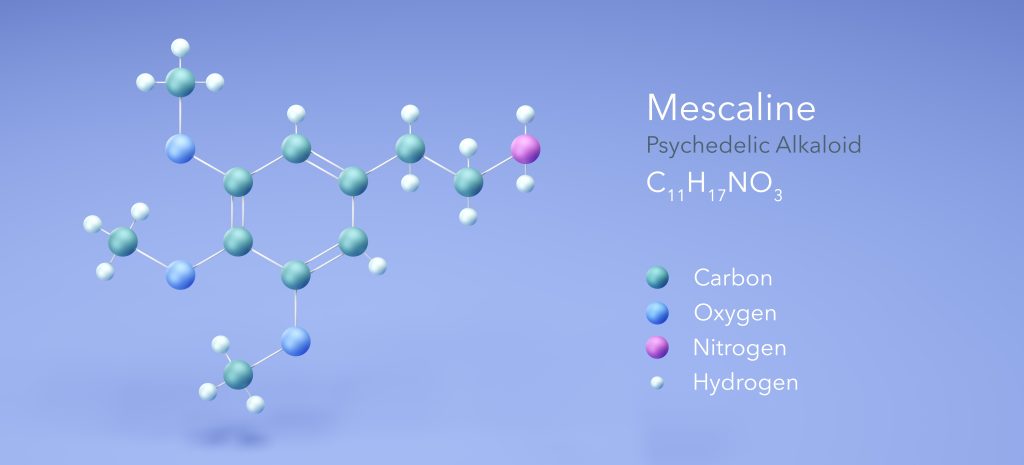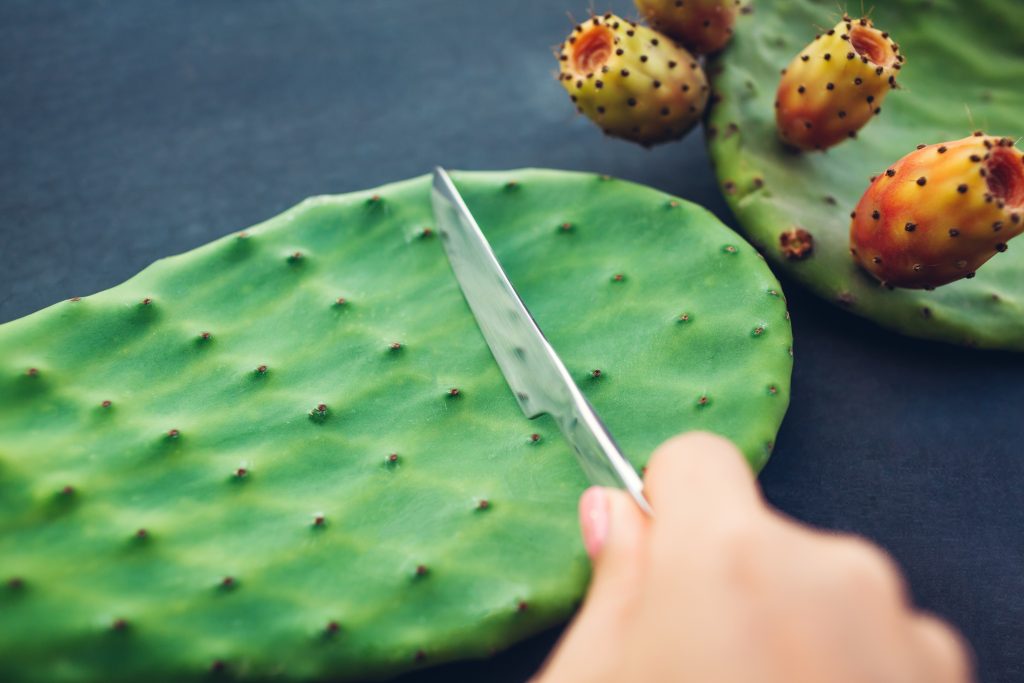
in this article
- Introduction
- A Sacred Tradition in the Andean Landscape
- Sacred Ceremonies in South America and Beyond
- The Discovery of Mescaline in San Pedro
- Harvesting and preparation
- Contraindications and Medical Considerations
- Conclusion
Are you 18 or older?
Please confirm that your are 18 years of age or older.
You are not allowed to access the page.

Disclaimer: The views and opinions expressed in this article are those of the authors and do not necessarily reflect the official policy or position of Chemical Collective or any associated parties.
San Pedro, also known as Huachuma, is native to South America, particularly Puru, Ecuador, and Bolivia. It also grows in Europe, where I live – in Spain
I often see it growing in people’s gardens and I’m pretty sure the owners have no idea of its amazing qualities.
In South America, it has a rich history of ceremonial use that spans thousands of years.
Mescaline, the psychedelic compound found in San Pedro cacti, is different from other psychedelics due to its classification as a phenethylamine. Unlike tryptamines such as psilocybin (found in magic mushrooms) and DMT (found in ayahuasca), which contain a core indole ring in their chemical structure, mescaline has a chemical structure based on a phenethylamine backbone. This distinction in chemical structure contributes to differences in pharmacological profiles and effects on consciousness, highlighting the unique nature of mescaline among psychedelics.

Today, San Pedro ceremonies are still practised in the Andean regions and beyond, attracting people of the Western world who seek to find peace and inner meaning in their lives.
San Pedro ceremonies are generally held in the day, in a place of beauty surrounded by nature. Everything becomes more intense and beautiful, and participants feel an overwhelming love for the world’s wonders. They become transfixed on simple things like a blade of grass reflecting the sun or a cloud travelling effortlessly through the sky, often bringing them to tears of joy and wonderment. Everything seems to glow with a ‘divine light’.
All of the senses are opened up and everything feels more intense.
During a ceremony, participants are encouraged to sink into the experience, letting go of their physical identity to allow them to feel their own soul and spirit.
It’s not all rainbows and butterflies though; fears have to be faced. The loving energy of the plant holds participants, giving them space to cry and release the things in life that have held them back. Fears and memories locked away within the confines of the body and mind are given space to rise and be faced.
San Pedro offers profound insights into the psyche and personal issues, dissolving walls built around the darkest hidden secrets.
San Pedro has a way of enhancing empathy, a valuable tool when seeking forgiveness for those who have caused harm. It opens a window to understanding their pain and suffering, as well as your own, allowing a more complete picture of a situation.
Though San Pedro can be intense, it is believed to be a gentler, calmer experience than Ayahuasca or Pyote. Vomiting is less likely to occur, especially if the braw has been well made.
It is said that Ayahuasca is the Mother of plant medicine, while San Pedro is the gentle grandfather. He helps aid in connecting with the more masculine aspects of life, showing an outward perspective of a multidimensional nature, so taking the personal and adding the bigger picture.
Another benefit of San Pedro is unlike Ayahuasca it does not affect your motor skill, so moving around, even hiking is possible. A wonderful way of exploring the wonders of nature.

For generations, San Pedro has been integral to the spiritual fabric of Andean civilisations, including the Moche, Chavín, and Inca Yet, despite its profound cultural significance, practitioners of San Pedro ceremonies faced persecution and oppression throughout history. With the arrival of Spanish conquistadors and later Christian missionaries, colonial authorities sought to eradicate indigenous spiritual practices, including those involving San Pedro.
During these challenging times, indigenous spiritual leaders and practitioners endured persecution, imprisonment, and even death for their beliefs and practices.
Today, San Pedro ceremonies continue to be cherished and practised in the Andean region and beyond, serving as a beacon of cultural heritage and spiritual wisdom. Efforts are in place to honour and protect indigenous traditions, including the sacred ceremonial use of San Pedro, ensuring that its legacy endures for generations to come.
Though some of the traditions and wisdom may be lost by taking the ceremonies out of their native lands it’s now possible to partake in a ceremony in many countries in Europe, including, Spain, Portugal, and the UK.

The discovery that San Pedro contains mescaline is attributed to the pioneering work of botanist and ethnobotanist Richard Evans Schultes. Schultes, an American scientist, conducted extensive research on hallucinogenic plants in South America during the mid-20th century.
Through his research, Schultes confirmed the presence of mescaline in San Pedro, along with other psychoactive compounds such as alkaloids. His groundbreaking discoveries shed light on the pharmacological properties of San Pedro and its significance in indigenous cultures.
As well as Mescaline, San Pedro also contains other alkaloids, albeit in smaller quantities they include.
Hordenine and Tyramine As mentioned in part one
3-Methoxytyramine Also known as 3-MT, this alkaloid is a metabolite of dopamine, a neurotransmitter involved in mood regulation and movement control. 3-Methoxytyramine is believed to play a role in the brain’s dopamine system and may contribute to the psychoactive effects of San Pedro.
Anhalonidine is a psychoactive alkaloid found in several cactus species, including San Pedro. It is structurally related to mescaline and may have similar effects on consciousness. However, its specific pharmacological properties and effects are not as well-studied as those of mescaline.
Anhalonine like anhalonidine, it is believed to have psychoactive properties.
Anhalonidine-N-oxide: This alkaloid is a derivative of anhalonidine and may also possess psychoactive properties similar to other alkaloids found in San Pedro.

San Pedro can be prepared for consumption in two different ways. Drying or boiling.
The method of boiling is traditional among indigenous cultures.
The active ingredients are found just under the skin in a thin layer. The cactus is skinned, removing as much of the white inner flesh as possible as it can cause nausea and contains very little of the active substance.
Having watched San Pedro being prepared it takes a surprisingly large amount of cactus to produce a few doses of medicine. Traditionally it is brewed over an open fire and the preparation itself is part of the experience. Giving time to reflect and prepare your intentions and hopes for the experience.
Boiling The skin of the cactus is placed in a large pot and covered in water. Then brought to a boil and left to simmer for six to eight hours. The heat extracts the mescaline and other Alkaloids.
Straining Once the brewing process is complete, the liquid is strained to remove the solid plant material.
Reboil The pulp from the initial boil is added to water and boiled for four hours. After straining, the two liquids are combined and boiled again to reduce them to a thick liquid.
Consumption San Pedro tea is consumed orally. It’s often recommended to start with a small amount and gradually increase the dosage as needed. The effects of San Pedro tea can take some time to onset, so it’s important to be patient and avoid consuming more until you understand how it affects you.
Drying The cleaned cactus stems are cut into small pieces and left to dry. Drying can occur naturally in the sun or by using artificial methods such as an oven or dehydrator. Proper drying helps preserve the potency of the psychoactive compounds.
Grinding Once dried, the cactus pieces are ground into a fine powder using a grinder or mortar and pestle. Grinding increases the surface area of the cactus, facilitating the extraction of mescaline. It can now be rehydrated and drunk or moved on to the next stage.
Extraction The powdered cactus material is then subjected to an extraction process to isolate the mescaline alkaloid. Different extraction methods can be employed, such as acid-base extraction or solvent extraction, to obtain a concentrated mescaline solution.
Purification The extracted mescaline solution may undergo further purification steps to remove impurities and unwanted compounds, resulting in a more refined product.
Consumption The purified mescaline or mescaline-containing extract can be consumed orally. It can be ingested directly, encapsulated into pills, or dissolved in a beverage. Care should be taken to measure dosage accurately, as mescaline is a potent psychedelic compound with varying effects depending on the dose.

Many medications should not be taken at the same time as San Pedro and Masculine. If you have any concerns, speak to a medical professional.
Monoamine oxidase inhibitors (MAOIs): mescaline is a serotonin agonist. Taking Masculine alongside MAOIs, a class of antidepressants, can lead to a dangerous increase in serotonin levels, resulting in a condition known as serotonin syndrome. This condition can cause symptoms such as agitation, confusion, rapid heart rate, high blood pressure, and even life-threatening complications.
Selective serotonin reuptake inhibitors (SSRIs): Similar to MAOIs, SSRIs are antidepressant medications that can increase serotonin levels in the brain. Combining Masculine with SSRIs can also increase the risk of serotonin syndrome.
Central nervous system (CNS) depressants Masculine can have psychoactive effects and may cause sedation or drowsiness. Combining Masculine with other CNS depressants, such as alcohol, benzodiazepines, or opioids, can potentiate these effects, leading to excessive sedation, respiratory depression, and other adverse reactions.
Stimulant medications Masculine may have stimulant effects on the central nervous system. Combining Masculine with other stimulant medications, such as amphetamines or cocaine, can increase the risk of cardiovascular complications, including elevated heart rate, hypertension, and arrhythmias.
Antipsychotic medications Some antipsychotic medications, particularly dopamine antagonists, may counteract the effects of Masculine Or increase the risk of adverse reactions.

San Pedro is a medicine deeply rooted in groundedness and simplicity. Often, our complex problems can be resolved through it’s honest transparency.
Other plants like ayahuasca can catapult us into realms so far beyond our ordinary consciousness, leaving us in awe that takes time to unpick and digest, sorting through the symbolism.
San Pedro works more as a bridge, It gently guides, step by step, Allowing one problem at a time to be solved.
Through this gentle guiding, it can be beautifully humbling, showing us our place in the grand scheme of things. It’s subtle yet powerful, reminding us that we are no more important than a rock or a flower. This is very freeing and helps us to drop the feeling that we have to take on so much responsibility in our inner worlds.
San Pedro’s mission is to facilitate a connection between us and the divine without all the bells and whistles. Subtly encouraging us to look inside and to embody our gifts.
Unlike other plants, it doesn’t thrust you into experiences you can’t integrate. It invites you to explore at your own pace, respecting free will and self-responsibility. It doesn’t force you anywhere you are not ready to go; instead, it gently invites you, offering suggestions, and allowing you to decide if you wish to accept the invitation.
San Pedro meets you where you are, holds your hand and empowers you to navigate your journey with grace, safety and autonomy.
I Think San Pedro is a medicine that is very grounded and interested in simplicity. A lot of the times the problems that we have could be made very simple and grounded and that is what the plant is invested in. A lot of plants like Ayahuasca blast you out into realms that are so far out from your normal reach that you come back like OMG where have I been? How do I get back there? What was that?
San Pedro is more of a plant that is more of a bridge, rather than, now did I get there, it’s more like let’s build a stairway and you fill a hole and the next time you fill another hole. It gives you a grounded experience,
It’s a plant that is very humbling, It’s like Yeah you’re beautiful but no more important than this rock right here.
It’s a plant that is very interested in building a bridge between us and the divine in a way that allows us to internalise that and embody our gifts, to navigate It’s not going to give you an experience that is so far beyond what you can’t integrate it .
When its said that San pedro brings you back together there is some truth in that. Though San Perdo can also blow you apart in some ways. But in measured and kind ways. Its not going ti take you anywhere you don’t want to go. It may suggest it, saying you might want to look here but you have the option of saying yes or no.That’s not true of a lot of plants. San Pedro meets you where you are and says do you want to do this? It is very interested in free will and self-responsibility. It allows you to choose when you are going to accept the invitation.
Debra Wilkinson | Community Blogger at Chemical Collective
Debra is one of our community bloggers here at Chemical Collective. If you’re interested in joining our blogging team and getting paid to write about subjects you’re passionate about, please reach out to David via email at: blog@chemical-collective.com

Welcome to Chemical Collective.
Create an account to earn 200 welcome points.
Already have an account? Sign in


Check out our Community Blog and get involved with the conversation. You will be awarded 50 x ChemCoins for each comment up to a limit of 250 total ChemCoins.


Have you purchased any of our products? Reviews and reports are so important to the community. Share your honest opinion, and we’ll reward you with 50 ChemCoins for each review!


Every time you complete an order with us, you’ll be awarded ChemCoins for each Euro spent.
Welcome to Chemical Collective.
Create an account to earn 200 welcome points.
Already have an account? Sign in

Earn commission every time someone makes a purchase through your link.
When you become an affiliate, you will be allocated a unique link to share with your friends, followers, subscribers, or Aunt Susan.
You can choose to payout the commission earned once per month, or save it up to receive on a rainy day! Commission earned is 5% of the total order value per referral.
Contact us to join the Chemical Collective family and become an affiliate.
share your toughts
Join the Conversation.
I gotta try it!
i hope to try one day, sounds great!
Must try